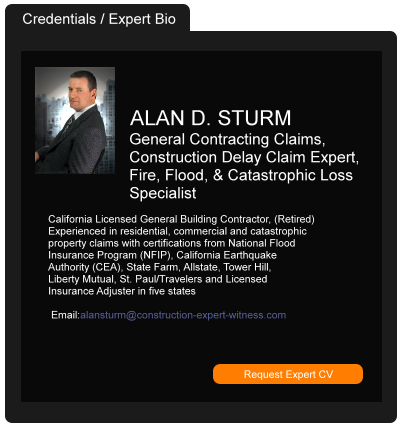Connecticut Builders Right To Repair Current Law Summary:
Current Law Summary: Case law precedent
Building Expert Contractors Licensing
Guidelines Fairfield Connecticut
License required for electrical and plumbing trades. No state license for general contracting, however, must register with the State.
Association Directory
Local # 0780
433 Meadow St
Fairfield, CT 06824
http://www.buildfairfieldcounty.com
Fairfield Connecticut Building Expert 10/ 10
Builders Association of Eastern Connecticut
Local # 0740
20 Hartford Rd Suite 18
Salem, CT 06420
http://www.baec.net
Fairfield Connecticut Building Expert 10/ 10
Home Builders Association of New Haven Co
Local # 0720
2189 Silas Deane Highway
Rocky Hill, CT 06067
http://www.hbanewhaven.com
Fairfield Connecticut Building Expert 10/ 10
Home Builders Association of Hartford Cty Inc
Local # 0755
2189 Silas Deane Hwy
Rocky Hill, CT 06067
http://www.hbahartford.com
Fairfield Connecticut Building Expert 10/ 10
Home Builders Association of NW Connecticut
Local # 0710
110 Brook St
Torrington, CT 06790
http://www.hbanwct.org
Fairfield Connecticut Building Expert 10/ 10
Home Builders Association of Connecticut (State)
Local # 0700
3 Regency Dr Ste 204
Bloomfield, CT 06002
http://www.hbact.org
Fairfield Connecticut Building Expert 10/ 10
Building Expert News and Information
For Fairfield Connecticut
Atlanta Office Wins Defense Verdict For Property Manager On Claims By Vendor, Cross-Claims By Property Owner
New Becker & Poliakoff Attorney to Expand Morristown Construction Litigation Practice
New York Developer’s Alleged Court Judgment Woes
Can I Be Required to Mediate, Arbitrate or Litigate a California Construction Dispute in Some Other State?
Locals Concerns over Taylor Swift’s Seawall Misdirected
Tighter Requirements and a New Penalty for Owners of Vacant or Abandoned Storefronts in San Francisco
California Court of Appeal Finds Alleged Inadequate Defense by Insurer-Appointed Defense Counsel Does Not Trigger a Right to Independent Counsel
Newmeyer & Dillion Gets Top-Tier Practice Area Rankings on U.S. News – Best Lawyers List
Engineer TRC Fends Off Lawsuits After Merger
The Road to Hell is Paved with Good Intentions: A.B. 1701’s Requirement that General Contractors Pay Subcontractor Employee Wages Will Do More Harm Than Good
Primer Debuts on Life-Cycle Assessments of Embodied Carbon in Buildings
COVID-19 Response: Recent Executive Orders Present Opportunities for Businesses Seeking Regulatory and Enforcement Relief and Expedited Project Development
Drowning of Two Boys Constitutes One Occurrence
Congratulations to BWB&O’s Newport Beach Team on Obtaining a Defense Verdict in Favor of their Subcontractor Client!
Appreciate The Risks You Are Assuming In Your Contract
Mark Van Wonterghem To Serve as Senior Forensic Consultant in the Sacramento Offices of Bert L. Howe & Associates, Inc.
Cost of Materials Holding Back Housing Industry
Cooperation and Collaboration With Government May Be on the Horizon
Wreckage Removal Underway at Site of Collapsed Key Bridge in Baltimore, But Weather Slows Progress
Kaylin Jolivette Named LADC's Construction and Commercial Practice Chair
Construction Defects #10 On DBJ’s Top News Stories of 2015
Dorian Lashes East Canada, Then Weakens Heading Out to Sea
Federal Subcontractor Who Failed to Follow FAR Regulations Finds That “Fair” and “Just” are Not Synonymous
Meet Orange County Bar Associations 2024 Leaders
LEED Certified Courthouse Square Negotiating With Insurers, Mulling Over Demolition
How the Jury Divided $112M in Seattle Crane Collapse Damages
Settlement Ends Construction Defect Lawsuit for School
Building a Case: Document Management for Construction Litigation
Implied Warranty Claims–Not Just a Seller’s Risk: Builders Beware!
Eleventh Circuit’s Noteworthy Discussion on Bad Faith Insurance Claims
Business Solutions Alert: Homeowners' Complaint for Breach of Loan Modification Agreement Can Proceed Past Pleading Stage
Groundbreaking on New Boulder Neighborhood
How Technology Reduces the Risk of Façade Defects
Decaying U.S. Roads Attract Funds From KKR to DoubleLine
Coverage Exists for Landlord as Additional Insured
Illinois Court Addresses Rip-And-Tear Coverage And Existence Of An “Occurrence” In Defective Product Suit
Tests Find Pollution From N.C. Coal Ash Site Hit by Florence Within Acceptable Levels
Real Estate & Construction News Roundup (08/08/23) – Buy and Sell With AI, Urban Real Estate Demand and Increasing Energy Costs
California Precludes Surety from Asserting Pay-When-Paid Provision as Defense to Payment Bond Claim
Leonard Fadeeff v. State Farm General Insurance Company
Motion to Dismiss Denied Regarding Insureds' Claim For Collapse
Invest In America Act Offers 494 Billion In Funding to U.S. Infrastructure and Millions of New Jobs
Loss Caused by Subcontractor's Faulty Work Covered in Georgia
A Landlord’s Guide to California’s New Statewide Rent Control Laws
Blurred Lines: New York Supreme Court Clarifies Scope of Privileged Documents in Connection with Pre-Denial Communications Prepared by Insurer's Coverage Counsel
CGL Insurer’s Duty To Defend Broader Than Duty To Indemnify And Based On Allegations In Underlying Complaint
Insurer Able to Refuse Coverage for Failed Retaining Wall
Courthouse Reporter Series: Nebraska Court of Appeals Vacates Arbitration Award for Misconduct
Extreme Heat, Smoke Should Get US Disaster Label, Groups Say
Unfortunate Event Test Leads to Three Occurrences


































































